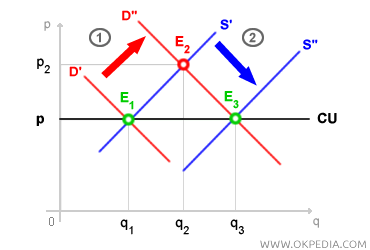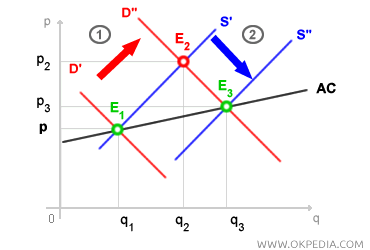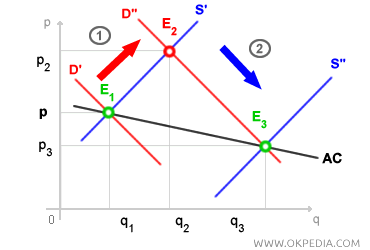Long-Run Equilibrium
Long-run equilibrium is an economic state where supply and demand for a good are balanced over time. It differs in key ways from short-run equilibrium. In the long run, firms have the flexibility to adjust their technology, output levels, and production capacity. Under these conditions, the optimal production level is determined by minimizing the average cost (or unit cost). Over time, all costs become variable, and firms aim to produce at the lowest average total cost. In the short run, however, production decisions are based on minimizing the average variable cost. Another important distinction is that, in the long run, new firms can enter the market freely. Supply adjusts instantly to meet changes in demand, preventing the possibility of supernormal profits. Based on how average costs relate to production levels, we can distinguish three types of long-run industry behavior.
- Constant-Cost Industry. In a constant-cost industry, the average cost (or unit cost) remains unchanged as production scales up or down. Any increase in demand is matched by an increase in supply without affecting the price of the good.

- Increasing-Cost Industry. In an increasing-cost industry, the average cost rises with increased production and falls as production decreases. While supply can still meet rising demand, producing more goods leads to higher costs and, consequently, higher prices.

- Decreasing-Cost Industry. In a decreasing-cost industry, the average cost declines as production increases and rises as production decreases. When demand grows, the increase in production lowers average costs, which in turn reduces the price of the good.

